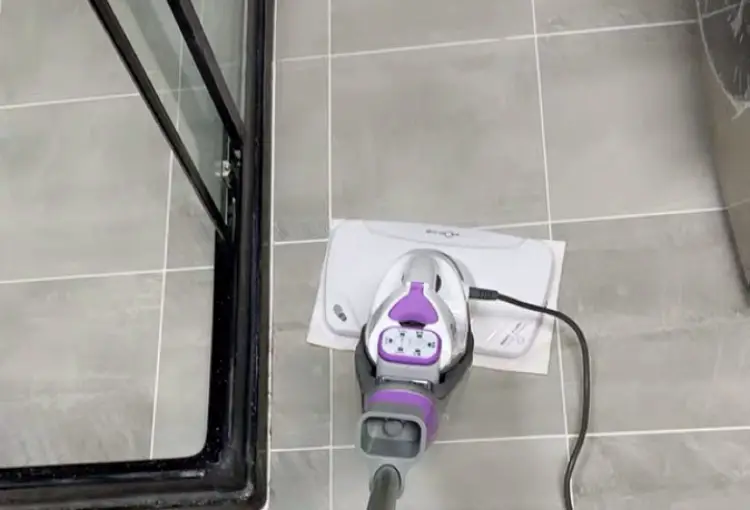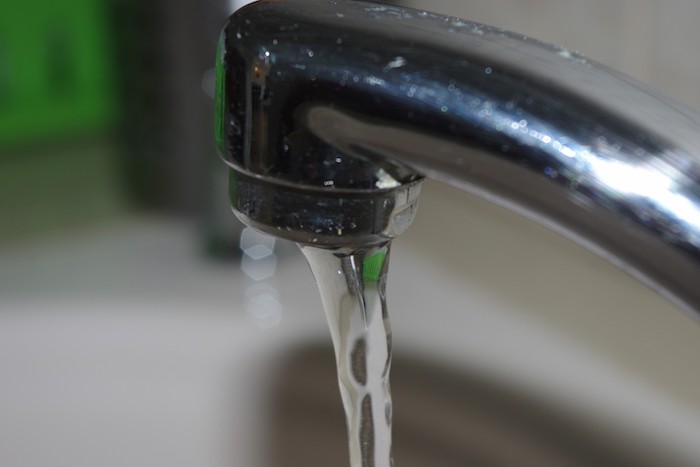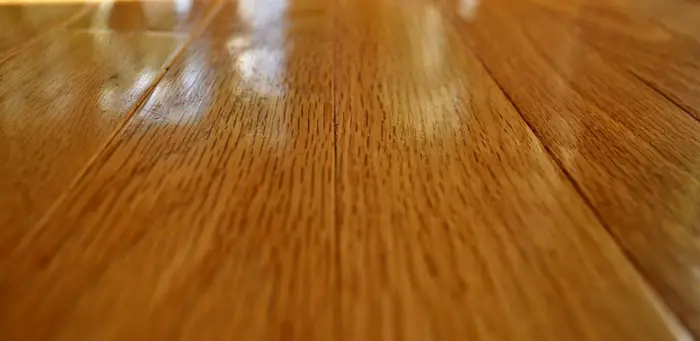Steam mops are the modern and advanced cleaning devices you can use to clean your floors without any harsh chemicals. As the equipment runs on electricity, you just need to add water and the mop will heat the water to an extremely high temperature to produce steam. This is an effective way of removing the dirt and grease from the floor. Steam is also capable of killing 99.9% of germs.
Many steam mop users have a common question ‘can I use tap water in my steam mop’ and the answer is yes, you may. Tap work works just as fine, but some manufacturers recommend distilled water so make sure you check the instructions in the product manual. The only difference between using tap water and distilled water is that the former contains minerals that can get deposited inside the water tank and require frequent cleaning.
As the steam mops (see my reviews) have comparatively smaller sized tanks, it is hard to look inside for any hard water scales or mineral deposits. If left neglected, this may hamper the performance of your appliance and even impact its life. Using distilled water is recommended because it does not contain any mineral, hence the tank does not get very dirty. Thus, it keeps your steam mop functioning at optimum condition for a long time.
Removing Deposits Caused By Tap Water
If you get hard water in your area, using tap water in the steam mop can cause a lot of scales and stains inside the broiler. Even the softened tap water may contain minerals that are not present in distilled water. Removing the hard water deposits are often the most neglected and overlooked the aspect of the steam mop care because these stains are not visible to the eyes.
As water is heated to a very high temperature to form intense steam, it leaves behind a lot of mineral deposits. Unless you use a specialized steam mop like the one from, any standard steam appliance is bound to develop mineral scales in the tank. Hence, anyone using tap water in the steam mop needs to clean the tank thoroughly to extend the life of the product.
The reason why the Ladybug appliances are exempted from this is that the naturally-occurring minerals produced when tap water evaporates are utilized by their internal antimicrobial system. As a result, the appliances with TANCs system are considered as the EPA-registered disinfectant, which is not a chemical.
For the standard steam mops, you will need to remove the hard water scales and deposits in the broiler or tank to ensure that they keep functioning at optimum capacity. If overlooked for too long, these buildups can eventually hinder the water movement and steam flow, leading to the premature breakdown of the appliance.
Don’t get stressed if you haven’t cleaned your steam mop for several weeks. It’s not that hard as it sounds. There are some steam mops that come with descaling agents or you can buy descalers separately to clean all types of home appliances that produce steam. If you prefer making your own natural descaler at home, here are the steps to help you:
Steps to clean tap water deposits

- Mix the store-bought descaler or mix about 1.5 oz. of baking soda with 1 quart of water.
- Fill the empty broiler or tank of the steam mop with this solution.
- Close the unit and switch on the steam mop so that the heating starts
- Let the water boil to the maximum temperature and set it to stay warm for up to 2 hours
- After 2 hours, use the steam mop for nearly one minute, and then unplug the unit and allow it to cool completely for about 3-4 hours.
- When the water cools completely, unplug the drain plug and remove water from the tank. Now, flush or rinse the tank completely with clean water and put the drain plug back in place.
Besides descaling the water tank in the steam mop, there are several other tips for steam mop maintenance. Below you will find some advice to take good care of the appliance to keep it in optimal condition.
Tips To Extend The Life Of Your Steam Mop
Now that you know my answer to ‘can I use tap water in my steam mop’, let’s take a look at how to clean the device. Just like any other home appliance, the steam mop also requires care and maintenance to function optimally. Despite whether you use distilled water or tap water in your steam mop, here are a few cleaning and maintenance tips you need to keep in mind.
1. Always unplug the machine before cleaning it.
When cleaning the broiler of a steam mop, make sure you have the supplies such as baking soda/ descaler, water, and soft microfiber cloth ready. Start by unplugging the machine and then wait for the mop to cool down completely before starting to clean it. It usually takes 15-20 minutes to cool and if you don’t allow that time, the mop pad and bottom parts may be too hot to touch.
2. Empty water from the tank before storing appliance away
After you are done with the cleaning, remember to empty the tank completely before storing away the steam mop. If you leave water in the appliance, this may cause erosion and mold growth. One of the easiest methods to add years to your appliance is to empty the water after you finish mopping the floors.
3. Remember to wash the cleaning mop pads
Most of the steam mop models come attached with special cleaning pads that can be washed and reused. Some of them can even be cleaned in the washing machine, hence cleaning them is a better option than throwing them away.
Start the process by removing the cleaning pads located at the bottom of the steam mop. If the pad is covered in dirt, soak it in laundry detergent mixed with baking soda (about one tablespoon). Let the pad soak for about 15 minutes for it to work its ways inside out into the cleaning pad. After 15 minutes, wash and rinse the pad thoroughly with clean water. Get rid of all the soapy residue and let the mop air dry completely before keeping it away.
If the pad used in your steam mop is machine washable, consider cleaning it with detergent and hot water. When the wash cycle is complete, toss it in the dryer and use the tumble setting. Never use bleach when cleaning the mop pad because this can weaken the fabric.
4. Scrubbing the water tank to remove any deposits
I have already mentioned the descaling method that you can do once a week or once biweekly depending on how frequently you use the steam mop. To extend the life of your appliance, remember to clean the inside of the water tank with a damp soft cloth after every use. Wet the soft cloth with warm water and gently clean all areas inside the tank. Scrub lightly if required to complete the cleaning. Also, use the damp cloth to clean the outside of the steam mop.
5. Wipe the entire steam mop
Use a damp cloth to wipe the entire surface of the steam mop to remove any specs of dirt, dust, or stains. You may use more than one cloth for a large size appliance. After you are done wiping, put all the cloths into the washing machine to clean and disinfect them.
6. Re-attach the water tank to the cleaner
After you wipe the body, you can re-attach the clean and dried water tank to the appliance. Make sure you add water only when you are ready to mop the floors again. Remember to remove any traces of moisture in the tank before putting it away.
7. Storing the steam mop correctly
After you are done with cleaning the mop, re-assemble it completely and store in an upright position for best results. Keep it in a place that is dry and completely dust and dirt free. Whenever you need to use the steam mop again, feel free to use tap water if the manufacturer has not instructed to use only distilled water, but remember to clean after every use.
8. Avoid adding detergents to the water tank
Avoid adding any sort of harsh detergents, soap, chemicals, or fabric softeners to the steam mop tank as the appliance is designed to be used with pure water only. Using chemicals may lead to corrosion and damage the important parts of the machine.
9. Replace any worn-out parts immediately
If you notice any worn-out parts or damaged accessories, make sure you replace them at the earliest to avoid any wear and tear down the line. The attached plugs and cables should also be changed after they get worn out to prevent a slowdown in the performance. Also, remember to check the filter frequently and if it is too clogged with dirt and debris, consider getting a new one.
10. Call an expert when needed
While I agree that there are some things that you can troubleshoot yourself, other technical issues are best left to the product experts. Contact the manufacturer for advice instead of repairing yourself as you may damage the product or get injured in the process.
Related Questions
How often should I clean the steam mop?
I would recommend that you do a quick clean up with water and let the tank dry completely after every use. If you use the steam mop several times a week, consider removing the mineral buildups once a week (if you use tap water).
What’s the difference between tap water and distilled water?
The tap water is considered ‘safe to drink’ by the local authorities but it may contain traces of chemicals (fluoride, nitrates, and microorganisms) used to treat water in a plant. Distilled water undergoes further purification to remove traces of minerals and any contaminants in water so that it becomes cleaner and purer.
Can I make distilled water from tap water?
If you get hard water in tap or your steam mop manufacturer has specifically mentioned the use of distilled water only, you may make your own distilled water from tap water.
Take a large stainless steel pot and fill it with water. Place a small glass bowl over the water (make sure it floats and does not touch the bottom). Let the water in the pot boil, invert the lid and close the pot.
Put some ice cubs on the inverted lid to create a condensation effect. When the steam rises, from the water within the pot, it will touch the cold lid and collect in the glass bowl. When the bowl has enough water, turn off the heat and let the distilled water cool before using it for drinking or cleaning purpose.
See Also:
Can You Use Steam Mop On Laminate Floors
Can I Put Vinegar In My Steam Mop?
Does A Steam Mop Clean Grout?
Can You Use A Steam Mop On Vinyl Floor?


